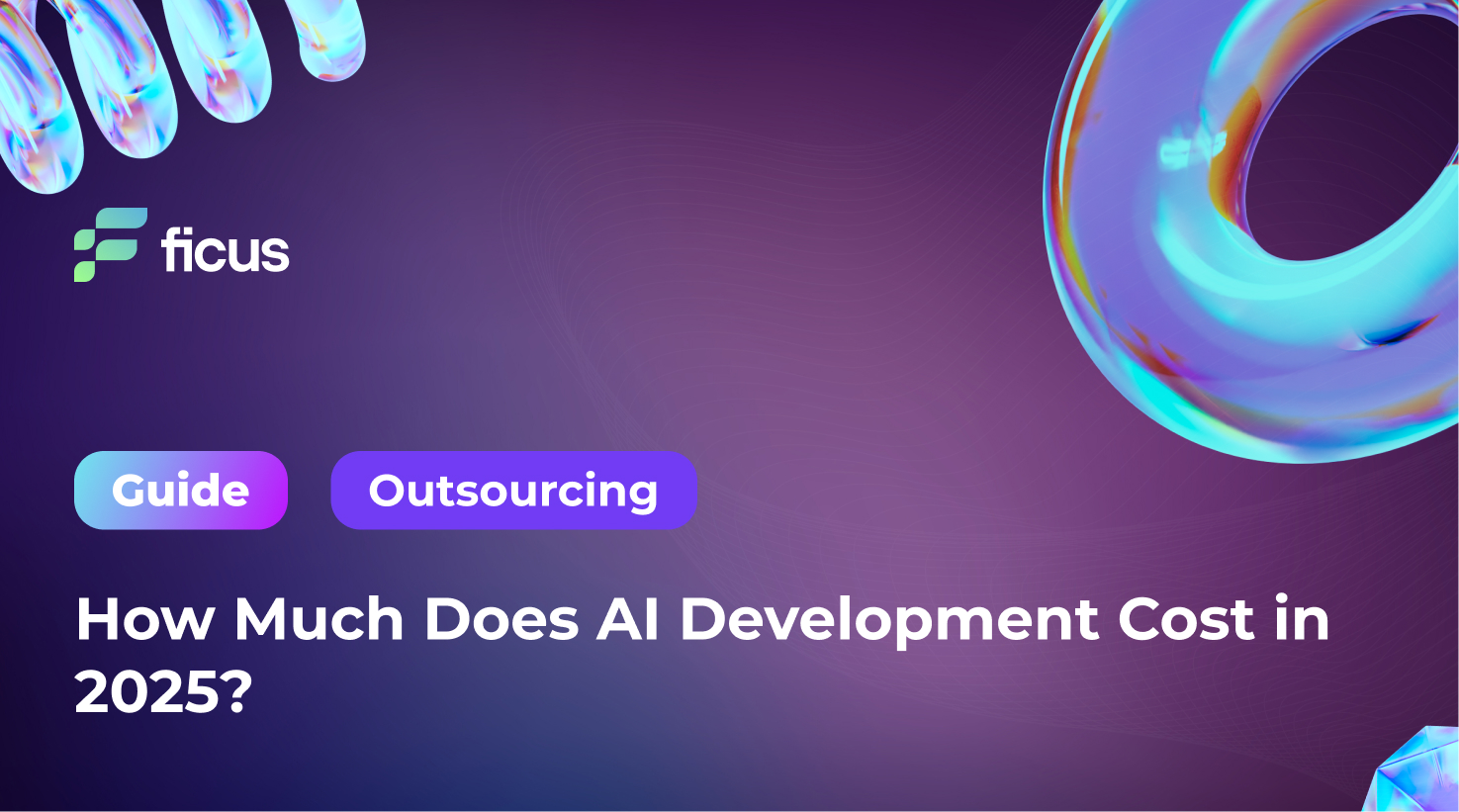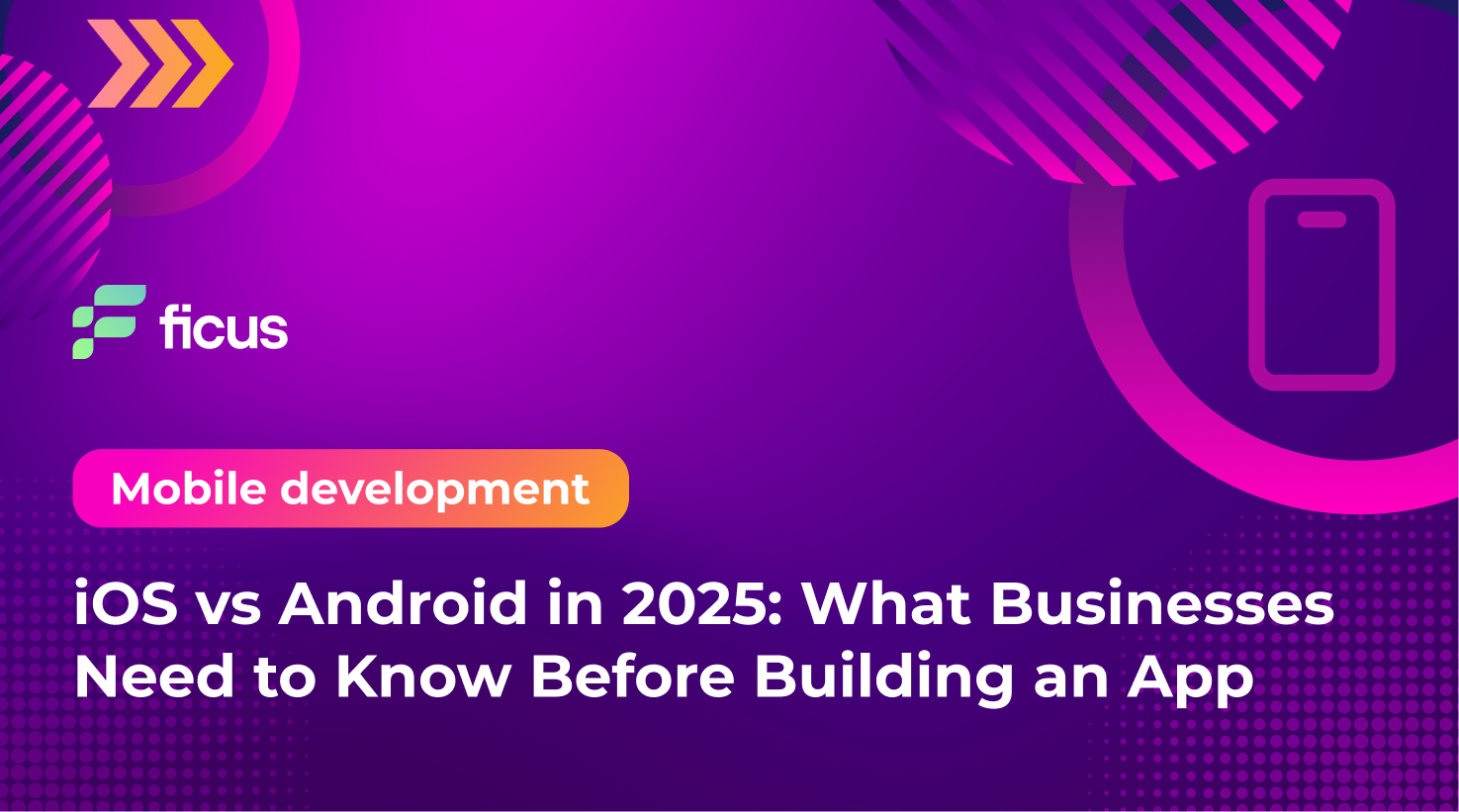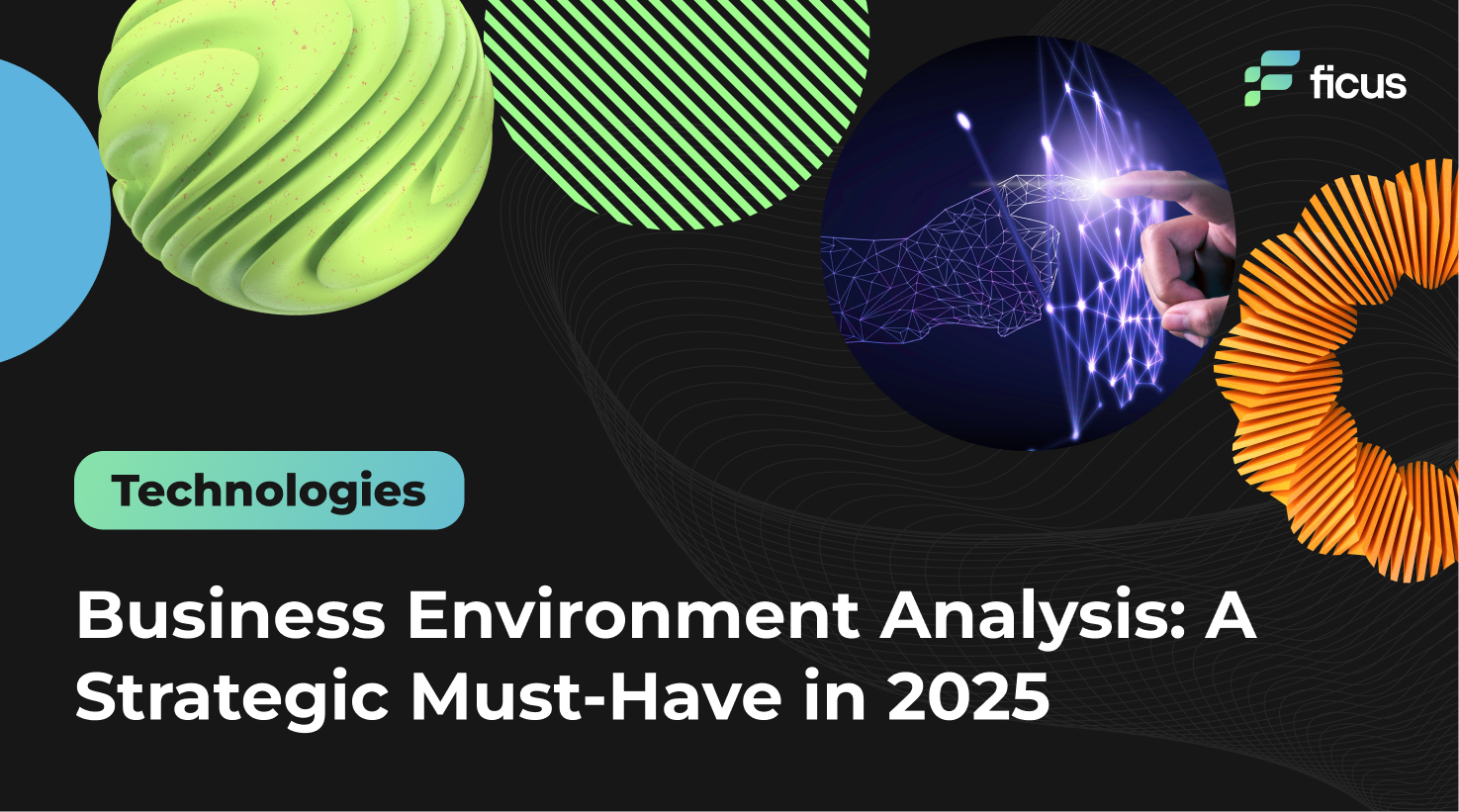Artificial Intelligence (AI) has transformed from a futuristic idea into a critical pillar of business strategy. In 2025, companies across industries — from healthcare and finance to retail and logistics — are actively embedding AI into their operations. It allows them to automate decision-making, personalize customer experiences, and drive entirely new business models. Yet behind the excitement lies a practical concern: how much does AI development actually cost? The answer is far from simple. With machine learning models becoming more advanced, cloud infrastructure expanding, and data becoming the new fuel for competitiveness, costs vary dramatically depending on the scope and complexity of each project.
- AI development costs vary based on solution type, complexity, and infrastructure.
- Pre-trained models, open-source tools, and MVPs help control budgets.
- Partnering with an experienced AI team reduces risk and accelerates ROI.
What Is AI Development?
AI development refers to the creation of software systems that mimic aspects of human intelligence. These systems are designed to learn from data, recognize patterns, and provide actionable insights in real time. Unlike traditional software, which is explicitly programmed with rigid instructions, AI is adaptive and evolves with every new dataset it processes. This makes AI uniquely powerful but also resource-intensive. Development usually involves gathering and cleaning data, training models, integrating them into existing systems, and continuously monitoring their performance. Each of these steps requires both technical sophistication and strategic alignment with business goals, which explains why costs can vary so widely.
Key Factors Affecting AI Development Costs in 2025
The cost of developing an AI system is shaped first and foremost by the type of solution a company seeks. Building a simple chatbot to answer customer queries requires significantly fewer resources than developing a large-scale computer vision system that monitors production lines or an enterprise-wide AI platform that supports decision-making across departments. Beyond the solution type, project scope also plays a decisive role. Narrow, well-defined objectives generally lead to faster and more affordable development, while broader initiatives that demand cross-platform integration, real-time analytics, and advanced automation quickly drive costs upward.
Another critical factor is data. Companies that already possess structured, high-quality datasets are at an advantage because they reduce the time spent on data preparation. In contrast, organizations with fragmented or poor-quality data must invest heavily in collection, cleaning, and annotation before training even begins. The complexity of the AI model itself also influences cost. While pre-trained models from open-source libraries can reduce expenses, businesses that require custom-built models for highly specific use cases must allocate significantly larger budgets. Finally, infrastructure cannot be overlooked. Running AI workloads requires substantial computing power, often relying on GPU clusters in the cloud, which can quickly add to operational expenses.
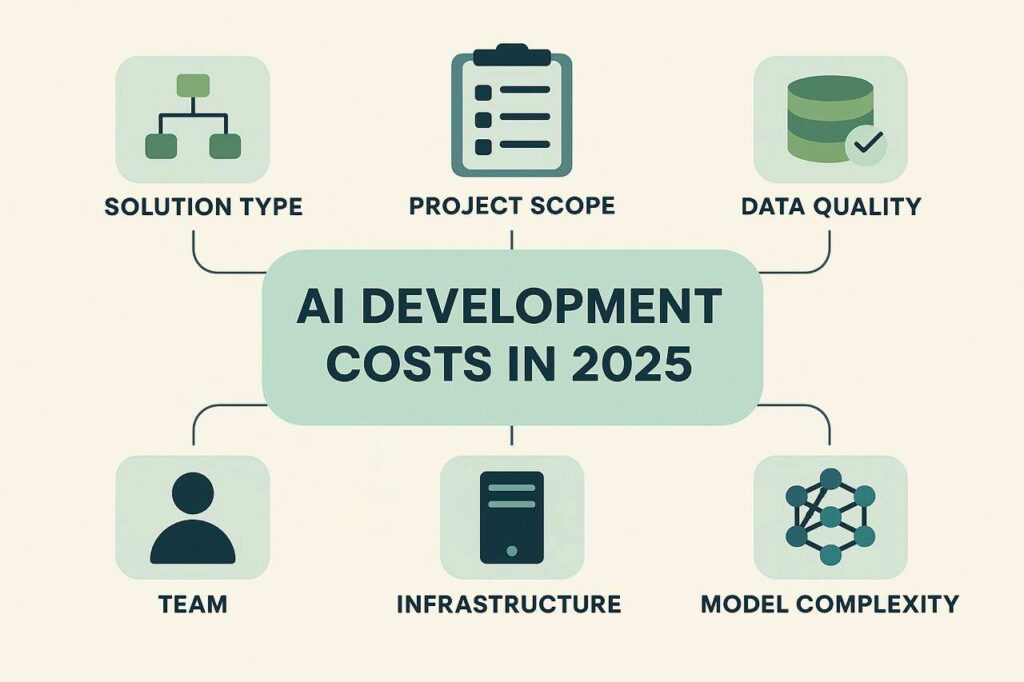
AI Project Team: Who Builds Your Solution
Behind every successful AI system stands a well-coordinated team. Developing artificial intelligence is not the task of a single engineer, but the combined effort of specialists with complementary expertise. A typical AI team in 2025 brings together four core roles that ensure both technical quality and strategic alignment.
The Data Scientist works with raw information, structuring, cleaning, and analyzing datasets so that they can be used effectively in model training. The Machine Learning Engineer transforms algorithms into working applications, fine-tuning models for accuracy and performance. Alongside them, the Cloud or DevOps Engineer ensures that AI workloads run smoothly at scale, deploying solutions on cloud infrastructure, monitoring performance, and guaranteeing system reliability. Finally, the Project Manager acts as the link between business goals and technical execution, ensuring that deadlines are met and priorities remain aligned with strategic objectives.
This mix of expertise is what transforms abstract AI ideas into reliable, scalable solutions. Without such a balanced team, companies risk delays, inefficiencies, and spiraling costs.
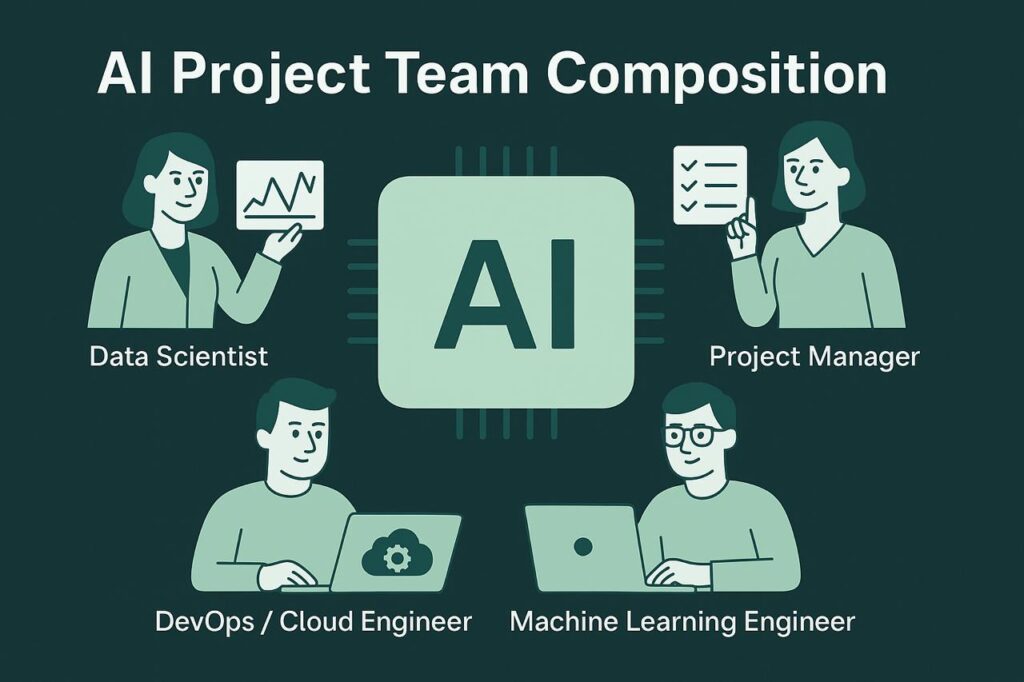
How to Optimize Your AI Development Budget
Even though AI development can require substantial investment, companies in 2025 have multiple ways to keep spending under control without sacrificing innovation. The most effective approach begins with launching a minimum viable product. Instead of building a complex system from the start, businesses test their ideas with a smaller version, measure the results, and only then expand. This method alone can reduce initial costs by 30–40%, since companies avoid overbuilding features that may not deliver value.
Using pre-built tools and frameworks is another proven strategy. Open-source libraries and pre-trained models can cut development time by up to 50%, allowing teams to focus resources on customization rather than reinventing the wheel. Prioritizing ROI-driven features has an equally strong impact. By concentrating on the 20–30% of functionality that generates the majority of business value, organizations often reduce wasted effort by 25% or more.
Automating data collection and annotation is also critical. Since manual data preparation can consume nearly 60% of an AI project’s timeline, streamlining these processes delivers substantial savings over the long term. Finally, working with an experienced AI vendor accelerates delivery by 20–35% on average, helping companies avoid common pitfalls while ensuring scalability and reliability.
Together, these strategies turn AI development from a high-risk expense into a carefully managed investment that drives measurable business growth.
Contact us today for a free AI development consultation
Contact UsConclusion
AI development in 2025 is both more accessible and more complex than ever before. On one hand, pre-trained models, open-source frameworks, and scalable cloud infrastructure lower entry barriers. On the other hand, the sophistication of modern AI requires careful planning, significant data resources, and specialized expertise. Costs can range from relatively modest for small-scale solutions to multi-million-dollar investments for enterprise platforms.
What remains clear is that businesses cannot treat AI as a side experiment. To succeed, they must align their investment with clear business goals, ensure that data pipelines are robust, and choose development teams capable of balancing innovation with efficiency. Companies that approach AI in this way will not only manage costs effectively but will also unlock the transformative potential of intelligent systems to gain a sustainable competitive edge.
Why Ficus Technologies?
At Ficus Technologies, we recognize that AI development is not only about building models but about delivering measurable business impact. Our approach integrates technical expertise with business strategy, ensuring that every project supports long-term growth and innovation.
We guide clients through the entire journey of AI adoption — from validating use cases and designing data pipelines to training custom models and deploying them on scalable, secure infrastructure. Our teams specialize in transforming abstract ideas into practical, high-performing solutions tailored to each industry’s challenges.
Our advantages include:
- Proven industry expertise across healthcare, finance, logistics, and retail.
- 70%+ senior-level talent, ensuring leadership and technical excellence.
- Agile-first delivery, which allows us to adapt quickly to evolving project needs.
- Security and compliance aligned with GDPR, HIPAA, and ISO standards.
- Transparent pricing models designed to give clarity and confidence in investment.
With Ficus Technologies, companies gain more than just an AI development vendor — they gain a strategic partner capable of helping them innovate responsibly, scale efficiently, and maximize return on investment.
Depending on complexity, development can range from 6 weeks (for simple tools) to 6+ months (for enterprise-grade platforms).
Yes. Using models like GPT or BERT can significantly reduce time and cost, especially for NLP applications.
Not necessarily. Many companies partner with external vendors for ongoing support and monitoring.
Yes. Starting with a focused MVP and scaling gradually allows SMEs to benefit from AI without large upfront costs.
